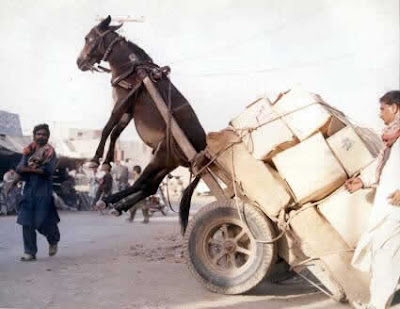Color is one of those things that people *think* they either have an eye for, or they don't. This is occasionally true; you'll have some people who have an uncanny knack to mix colors the same every time; or be able to match paint swatches correctly the first time just by eye. For some people, working with color comes naturally. However, if you are not one of those people, you can LEARN how to do this by understanding colors, how they interact, and how to mix them to create what you are after.
Perfect Pitch vs. Relative PitchFor you musicians out there, you can understand this concept of learning color theory through something similar in music: Having perfect pitch. Having perfect pitch is similar to an artist having an eye for color. Having perfect pitch means that when one hears a note, they can recognize the octave and pitch just by ear. This means if you hit a note on the keyboard, that person will know immediately what note that is. This is something a person is born with.
However, having relative pitch is having the ability discern the interval between two pitches and recognize it that way. This means that if you hit two notes on a keyboard, that person can figure out the first note by using the second. Relative pitch is something you can learn through practice. Similarly, color theory is something you can also learn through practice. So... for those of you who seem to be having an awful job mixing colors... don't despair... there is hope!
First, lets talk about color basics. In this first segment, I want to talk about the words we use to describe colors, so that you can use the proper vocabulary when discussing it.
Color BasicsColor is the perceptual characteristic of light described by a color name. Specifically, color is light, and light is composed of many colors—those we see are the colors of the visual spectrum: red, orange, yellow, green, blue, and violet. Objects absorb certain wavelengths and reflect others back to the viewer. We perceive these wavelengths as color.
A color is described in three ways: by its name, how pure or desaturated it is, and its value or lightness. Although pink, crimson, and brick are all variations of the color red, each hue is distinct and differentiated by its chroma, saturation, intensity, and value.
Chroma, intensity, saturation and luminance/value are inter-related terms and have to do with the description of a color.
Chroma: How pure a hue is in relation to gray
Saturation: The degree of purity of a hue.
Intensity: The brightness or dullness of a hue. One may lower the intensity by adding white or black.
Luminance / Value: A measure of the amount of light reflected from a hue. Those hues with a high content of white have a higher luminance or value.
Shade and tint are terms that refer to a variation of a hue.
Shade: A hue produced by the addition of black.
Tint: A hue produced by the addition of white.
Now at this point I bet you are wondering how this effects model horse painting. Well, by using your understanding of color theory, you can mix colors that have a higher level of vibrancy, luminosity, and saturation.
It is a common mistake for people who paint model horses to make colors darker by using black (shade), or make colors lighter by adding white (tint). The problem with this is that although this is a valid way to alter intensity, it often times effects and changes colors into shades that are not natural in the horse world. For example, if you take burnt sienna and add white... you get a pink color. Great for noses, but not what you want on the body color of your horse! Similarly, if you add just white to black to do a gray horse, you may end up with a color closer to slate blue instead. The reason for this is that black paint is never a TRUE black, but instead usually a very dark blue or purple that shows its true nature when modified with white. Because of this, white and black can never create a "natural" looking gray horse. You must always modify this mix with a brown or yellow to neutralize the blue (more on this later).
As (flatwork) artists advance in their use of color, many will drop the use of black and white altogether in most of their work in favor of using other colors to highlight and shade. I know that in much of my fine art and portraiture work, I no longer use white or black as part of my palette unless absolutely necessary. Shading and highlights can be achieved instead by using colors that are in the same family as the base color. So, if you use burnt sienna as your base color for a chestnut, then your highlights can be done in a raw sienna, and your shading can be done in a burnt umber. White should be reserved for white markings; and even then should be modified with a raw sienna to soften it.
The best way to start understanding color theory and how colors work together is through a color wheel. Colors have relationships with each other on the color wheel. While most horses fall into a very narrow color range, by understanding what colors work together then you can accentuate the "horse" colors (reds, browns, whites, golds) with other more less-intuative colors like violets, blues and even greens. Using these colors can punctuate your piece, adding depth and variation in the coat.

In the next addition... more on these relationships and how they look on a model horse! Over the next few additions I will go over many basic horse body colors (chestnut, bay, gray, dilutes, black) and show how you can add new colors to the traditional mix to really bring out the 'wow' factor.





















